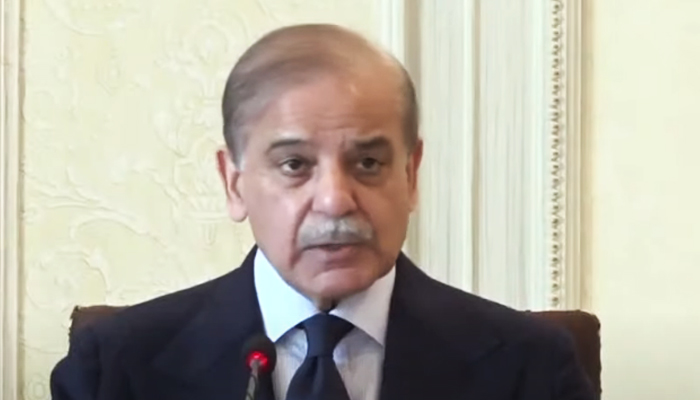Sports
Neelum-Jhelum’s troubled portion to get Rs23bn repairs
字号+ Author:Smart News Source:Travel 2025-01-15 08:31:12 I want to comment(0)
ISLAMABAD: The government has decided to repair the faulty portion of the Headrace Tunnel (HRT) of the 969-megawatt Neelum-Jhelum Hydropower Project (NJHP) at an estimated cost of Rs23 billion, which would keep the plant unavailable to the national grid for another eight months. A meeting, presided over by Planning Minister Ahsan Iqbal on the orders of the prime minister, was told by international consultant James Stevenson that reconstruction of the entire HRT would cost more than Rs222bn and may take a couple of years to complete. However, the faults had been identified between kilometre 13 and 16 inside the tunnel, which could be reached through adits (horizontal access). The affected part would have to be reinforced through ‘concrete lining’ and will take eight months and about Rs23bn. Mr Stevenson said concrete lining of the troubled portion was advisable and techno-economically viable option. According to officials, the shutdown of the Rs500bn worth of Neelum-Jhelum Hydropower Project, which officially ceased operations on May 2, is estimated to result in direct annual losses of over Rs55bn. Due to the need for expensive replacement fuel, indirect losses could range from Rs90bn to Rs150bn, depending on the fuel source. The project previously produced over 50 billion units of clean energy annually with zero fuel cost. Informed sources said the water sector quarters were still trying to protect some officials who may have been responsible for the lapse, omission or commission or may have contributed to the problem during the construction phase 15 years ago. They were still involved in the project and provided technical assistance with the investigation. “The experts recommended steps to fix blockages and structural damages inside the tunnels,” said an official statement issued after the meeting. It added that the minister “directed the concerned authorities to expedite repair work and develop a detailed plan based on scientific studies that could be able to justify the costs spent on the projects”. He stressed that the remedial work must provide a sustainable solution, ensuring long-term stability and value for the investment. The 969MW project near Muzaffarabad in Azad Jammu and Kashmir is of great importance to Pakistan’s energy needs. Since its start in 2018, it has produced over 20,030 million units of electricity. However, recent structural problems in the project’s Head Race Tunnel have led to temporary power stoppages. To resolve these issues, an international panel of experts, including a prominent Pakistani geologist, was appointed to identify the causes and suggest solutions. Ironically, an independent panel of experts is believed to have raised red flags last year about the HRT of the project, as well as recommended preventive measures that were not implemented before it was shut down in May this year after a couple of weeks of operations. The project was previously closed in July 2022 due to major cracks in its 3.5km Tailrace Tunnel (TRT), which was repaired over the next 13 months. Power generation started again in August-September 2023, attaining its maximum 969MW capacity on March 29, as announced by the Water and Power Development Authority (Wapda). Within a week, on April 3, the 48km-long HRT dropped pressure, and power generation fell to about 400MW “soon after the project was restored to full capacity by international contractors because of cracks in the HRT. They said the project authorities and contractors, in consultation with the Wapda management, tried in-house emergency measures to restore the project but the fault was bigger than anticipated and the plant was ultimately shut down. The earlier repairs of 3.5km TRT cost the nation about Rs6bn, in addition to about Rs37bn in energy loss during repairs, maintenance, and testing over the following 20 months. While investigating the Tailrace Tunnel collapse of July 2022, the expert pointed out that independent specialists had pointed out a big geographical fault on the main boundary thrust. The meeting was also attended by the secretary of water resources, chairman Wapda, and others, who also discussed the challenges faced by Diamer Bhasha Dam. The minister directed the immediate resolution of land-related issues, emphasising that approximately 18,000 acres belong to the government, while the remaining land, for which payment has already been made, must be transferred to Water and Power Development Authority to enable project commencement. He instructed the Chief Secretary of Gilgit-Baltistan to submit a report within a month regarding the official transfer of this land.
1.This site adheres to industry standards, and any reposted articles will clearly indicate the author and source;
 Related Articles
Related Articles-
Bank Manager co-accused in Rs3.2 Billion Fraud gets bail with Rs100 Surety Bond
2025-01-15 07:55
-
ATC suspends arrest warrants for KP CM Gandapur
2025-01-15 07:52
-
Meghan Markle's Instagram debut becomes a beach blunder
2025-01-15 06:53
-
IHC sets aside life sentence of murder convict, seeks reasoning behind lenient punishment
2025-01-15 06:09
 User Reviews
User Reviews Recommended Reads
Recommended Reads Hot Information
Hot Information- Human trafficking in Pakistan
- How to live long, healthy life in 2025?
- ATC suspends arrest warrants for KP CM Gandapur
- Hilarie Burton reveals 'One Tree Hill' reboot hasn’t been greenlit yet
- Lt Gen (r) Zahid Latif takes charge as new NUST rector
- Jennifer Lopez believes she hasn't done her 'best movie' yet
- Aurora borealis light up New Year's Eve sky with stunning display
- Armie Hammer reflects on career hit by cannibalism allegations
- Karachi traffic plan for Youm-e-Ali announced
 Abont US
Abont US
Follow our WhatasApp account to stay updated with the latest exciting content













